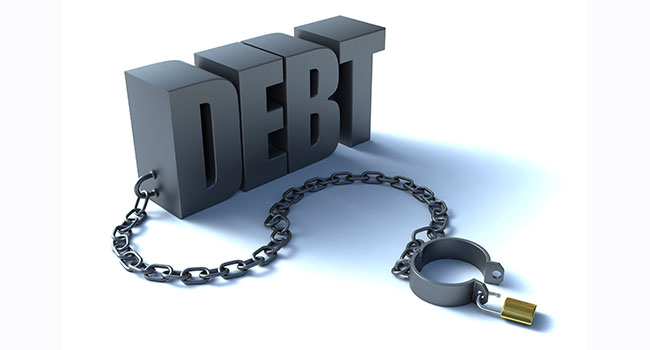 Ordinary Canadians have begun worrying about something that usually only ‘dismal scientists’ – i.e. economists – care about: our alarming federal and provincial deficits and exploding government debt.
Ordinary Canadians have begun worrying about something that usually only ‘dismal scientists’ – i.e. economists – care about: our alarming federal and provincial deficits and exploding government debt.
Putting an economy into lockdown was assuredly going to reduce tax revenues and increase transfers to individuals and businesses to ameliorate the devastation wrought by the COVID-19 pandemic.
But it only became clear this summer the extent of the fiscal damage: a federal deficit of $343.2 billion for the current fiscal year ending in March, and a federal debt exceeding $1 trillion or just under 50 per cent of gross domestic product.
It will be difficult to ratchet back all the support measures at once. And tax revenues are unlikely to recover quickly as employment growth seems to be slowing down.
So the attention must swing to how to sustain large deficits, wind them down and gradually slow down the debt accumulation.
Much as politicians will try to deny it, they will inevitably start to think about how to bring in more money. And that has to come from individuals and businesses (which are also, ultimately, owned by individuals).
Here’s a list of some current and potential tax and quasi-tax grabs that governments at home and abroad might choose to use – or raise extortionately if they already exist:
Personal income tax: This is the biggest revenue earner. The cries of “make them pay their fair share” will be trained on higher-income people, which has included the middle class of late.
Corporate income tax: A significant revenue stream, this tax hasn’t been raised significantly since doing so deters investment and hiring. It also lowers potential returns on investment, discouraging venture capital. It’s difficult to raise this tax significantly when Canada must compete for investment with lower-tax nations such as the United States, which lowered its corporate income tax by 40 per cent three years ago.
Capital gains tax: Generally a part of income tax but treated separately. Lowering it can actually bring in more money, as investors and speculators turn over their holdings more often. However, the optics of this are bad if other taxes are being raised.
Sales taxes: These are already substantial, particularly in central and eastern Canadian provinces. These are considered regressive, since lower income people spend almost all their income on goods and services that are taxed.
Value added or goods and services taxes: Called the former in most of the world and the latter in Canada and India, this tax is paid at every stage of production, distribution or transfer by businesses and consumers. Currently at five per cent in Canada, it’s also regressive. But low-income individuals receive a rebate from the government. Increasing it could hurt overall economic activity but rake in billions.
Excise taxes: These are taxes on gasoline, diesel fuel, alcohol, tobacco, cannabis and other discretionary expenses. However, these are already high, and further increases could encourage smuggling, illicit production and black market sales.
Capital tax: This is paid by financial institutions in Canada to finance part of the cost of regulatory oversight. It’s tempting to raise this since it’s a hidden tax.
Land transfer tax: This is paid when a real estate property is sold. This increases the friction, as economists term the costs of transactions, making real estate more expensive.
Foreign resident investor tax: This is paid by non-citizens when they purchase property in British Columbia and Ontario.
Carbon taxes: These are paid throughout Canada and increase the cost of fuel, and thus of transport and heating.
Transit taxes: These can be added at the fuel pump or to utility bills. They’re in place in B.C. and other provinces. The money ostensibly goes to regional transit services or transportation infrastructure.
Tariffs and other import fees or duties: The official average tariffs in Canada are about two per cent, but that average includes imports from Mexico and the U.S., which are duty-free. Excluding them, the average rate is substantially higher. It can’t be raised much more, owing to World Trade Organization obligations.
Wealth or estate taxes: Canada doesn’t have the former and dropped the latter when it adopted a capital gains tax in the 1970s. Neither would pull in much money and could cause a lot of resentment.
Permit, application, licence, registration fees: Sneaky ways to gouge, they could be jacked up.
Inflation or printing money: This is already occurring. The Bank of Canada is buying federal debt, effectively monetizing it. As there’s considerable slack in the economy, this has not shown up in the consumer price index or other price indexes – yet.
While some fringe economists believe this can go on indefinitely, nations such as Venezuela have proved it can’t. The United Kingdom had to get an International Monetary Fund bailout in the 1970s when it tried to do it and Canada was well on the way in the 1990s, when our debt last skyrocketed.
While interest rates are near zero, investors tend to revise the rates on what they deem bad risks, such as financial incontinent nations, so they will pay ever-rising yields on their escalating debt at some point. It’s never pretty.
Ian Madsen is a senior policy analyst with the Frontier Centre for Public Policy.
Ian is a Troy Media Thought Leader. Why aren’t you?
For interview requests, click here. You must be a Troy Media Marketplace media subscriber to access our Sourcebook.
The views, opinions and positions expressed by columnists and contributors are the author’s alone. They do not inherently or expressly reflect the views, opinions and/or positions of our publication.


